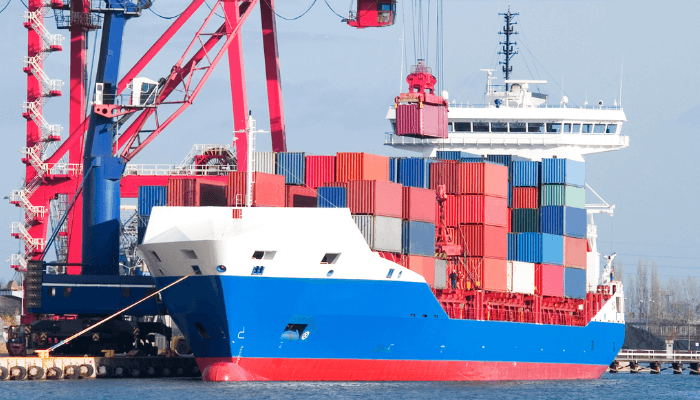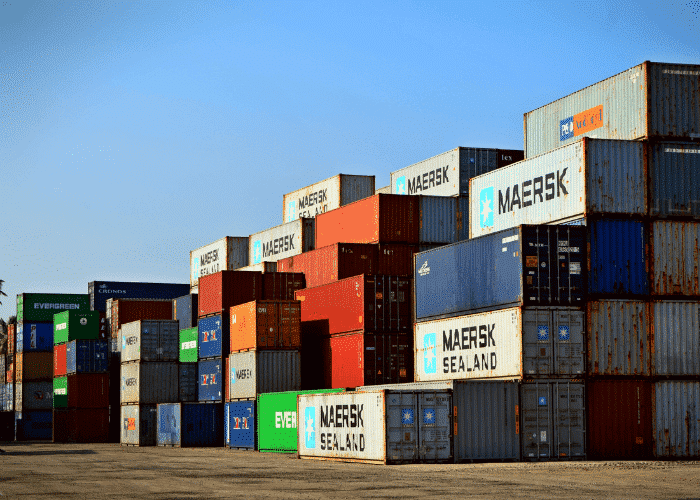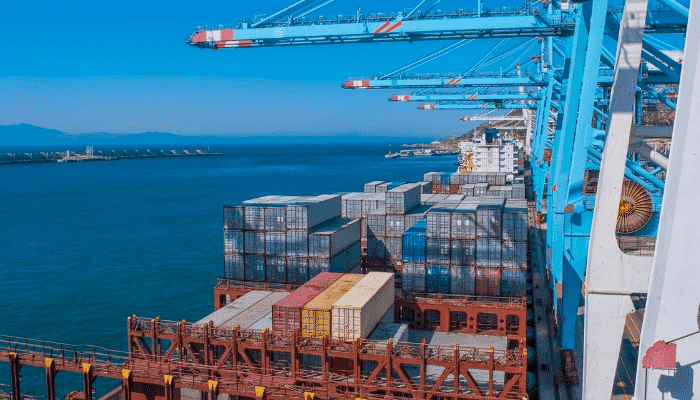Understanding Block Stowage In Shipping
Imagine sifting through thousands of stacked containers on a cargo ship to find a specific one meant for unloading? The worst nightmare is yet to come if the container happens to be somewhere at the bottom of the stack!
As you can see, haphazard stacking and stowage of containers on board a ship lead to the breakdown of cargo operations causing many serious problems.
These can include stack collapses and accidents, delays in offloading containers, delays in the departure of the vessel, etc. Incidents of stack collapse often result in containers being lost at sea.
Stowage is the secure storage of cargo onboard a ship. Unnecessary handling of containers may cause damage to the cargo. When a container has to be moved and repositioned to make way for another container, it is called restow. It may be to the same stow position or a new one. Re-stowing costs time and money.
Most cargo vessels these days are cellular, with vertical braces at the four corners to hold the vertical container stacks securely. They are designed for the efficient and safe stowage of containers.
The movement and rolling of a ship can exert tremendous force on the cargo sometimes causing them to topple over. Hence, the cargo has to be lashed and secured properly.

What is block stowage?
It is the method of segregating and storing containers or cargo onboard a ship so that those meant to be offloaded at a specific location are stacked together. This is to overcome the nightmare scenario that we discussed at the beginning of this article.
Block stowage helps to offload cargo and containers quickly and conveniently once the vessel reaches a port and restowing can be avoided.
When containers are arranged as block stowage, the stevedores do not have to search for the cargo to be offloaded as all the containers on board are segregated and marked effectively, by destination port.
This helps to offload containers easily saving time and effort. It avoids unnecessary delays at ports. When a ship is delayed at the port the vessel owner has to pay the additional charges levied by the port as well as incur all other expenses of the crew of the vessel.

Dangerous Goods and Block Stowage
When dangerous goods are transported by sea they have to be kept separately and away from other goods following the principle of block stowage.
Other than the rules prescribed by the IMDG Code, MARPOL, and SOLAS, shipping companies have their own compliance documents for each vessel.
What are IMDG, MARPOL, and SOLAS?
IMDG
IMDG stands for International Maritime Dangerous Goods code. These are requirements to be followed while transporting goods classified as dangerous. The IMDG code is detailed and covers individual products regarding their packing, segregation, and stowage.
MARPOL
The MARPOL Convention is a convention for the prevention of pollution caused by ships. It covers the transport and packaging of pollution-causing substances by sea, in accordance with the rules and regulations set forth by the convention. It prohibits the carriage of such dangerous goods if these rules and regulations are not followed.
SOLAS
This is an international convention for the safety of mariners at sea which had its origin post the Titanic disaster. The convention that is in force today is the SOLAS 1974. It covers the transportation of all dangerous goods and is considered a part of IMDG.
Who is Responsible for Block Stowage?
The effective stowage of cargo on a ship is the stowage planner’s responsibility. The ship stowage planner plays a critical role in ensuring that containers are stacked and stowed logically and safely onboard the cargo vessel.
Depending on the booking of containers, while some containers are loaded from certain ports, containers that are already on the ship have to be offloaded at their destination ports. This has to be planned so that there is minimal handling of containers.
Block stowage patterns aid in the easy loading and unloading of cargo by location. It is also useful in segregating dangerous goods to prevent accidents or to face any dangerous situations.
The efficient operation of a cargo vessel depends on the efficient stowage plan prepared by a stowage planner. The stowage planner has to plan block stowage in such a way that containers meant for a specific port are all stowed together.
The heavy ones should be stowed at the bottom. Those containers for the nearest discharge should be on top. Dangerous goods must be kept separately while ensuring their safety during handling and transport.
At the same time, the weight factor has to be also considered. An unevenly balanced weight onboard the ship can cause instability to the vessel.
As you can see, stowage planning is an effective combination of these different factors.
Stowage plans are prepared manually by experienced stowage planners. Sometimes sophisticated stowage planning software is used by these planners.
When it is prepared manually, the utmost care has to be taken and all factors should be considered for the safety of the cargo as well as the ship.
Software such as the StowMan and MACS3, Videck, Computer Automated Stowage Planning (CASP), etc. help to plan, select, move, and place containers on the ship.
Some shipping companies may have centralized stowage planning operations to take care of the stowage of cargo on their fleet of vessels.
Such operations use real-time data of containers at the various ports of loading to prepare stowage plans which are then conveyed to each vessel. Stowage planning software makes easy work of block stowage.
Typically, software for stowage planning shows the stow positions of containers and the information on ports where each one is to be unloaded.
Planners get to see the entire cross-sectional view of the cargo area as well as each different section separately to aid them with planning and operations.

Inputs Required for Preparing a Stowage Plan
A stowage planner has to have certain inputs to prepare a stowage plan. The main inputs are the following:
- The list of ports of call in the sailing schedule.
- The list of containers to be loaded from each port – segregated by size, type (dry, reefer, others), weight, whether hazardous cargo, Out of Gauge (OOG) cargo, destination, etc.
This information is processed and space allotted for each container. Allotment of space is based on a container’s destination, weight, and type.
Containers to be offloaded at the last destination are usually stowed at the bottom with the heaviest ones of these at the base of the stack. Those containers that are to be offloaded at the next destination are stowed on top of these in the same order and so on.
In this manner, containers that are to be offloaded at the nearest port of call of the vessel will be on top of the stack. The planner creates ‘blocks’ of containers and each of these ‘blocks’ may be separated by colour-coded sheets or other markers.
Having said that, to prevent the aggravated rolling of a ship, containers that weigh less are sometimes kept below the heavier ones, underdeck.
You might also like to read:
- What is International Maritime Dangerous Goods Code (IMDG)?
- What is an Off-Hire Container?
- Top 10 World’s Largest Container Ships In 2021
- What is Stuffing and Destuffing of Shipping Containers?
- Understanding the CSC Plate Of Shipping Containers
Do you have info to share with us ? Suggest a correction

About Author
Hari Menon is a Freelance writer with close to 20 years of professional experience in Logistics, Warehousing, Supply chain, and Contracts administration. An avid fitness freak, and bibliophile, he loves travelling too.
Latest Maritime law Articles You Would Like:
Latest News
- What is the Purpose of DG Shipping?
- What are Logistics Risks?
- How Port and Terminal Operators Can Control Emissions?
- Minimum Quantity Commitment (MQC) and Liquidated Damages in Container Shipping: Concept and Relevance
- MARPOL (The International Convention for Prevention of Marine Pollution For Ships): The Ultimate Guide
- The Ultimate Shipping Container Dimensions Guide
Subscribe To Our Newsletters
By subscribing, you agree to our Privacy Policy and may receive occasional deal communications; you can unsubscribe anytime.















